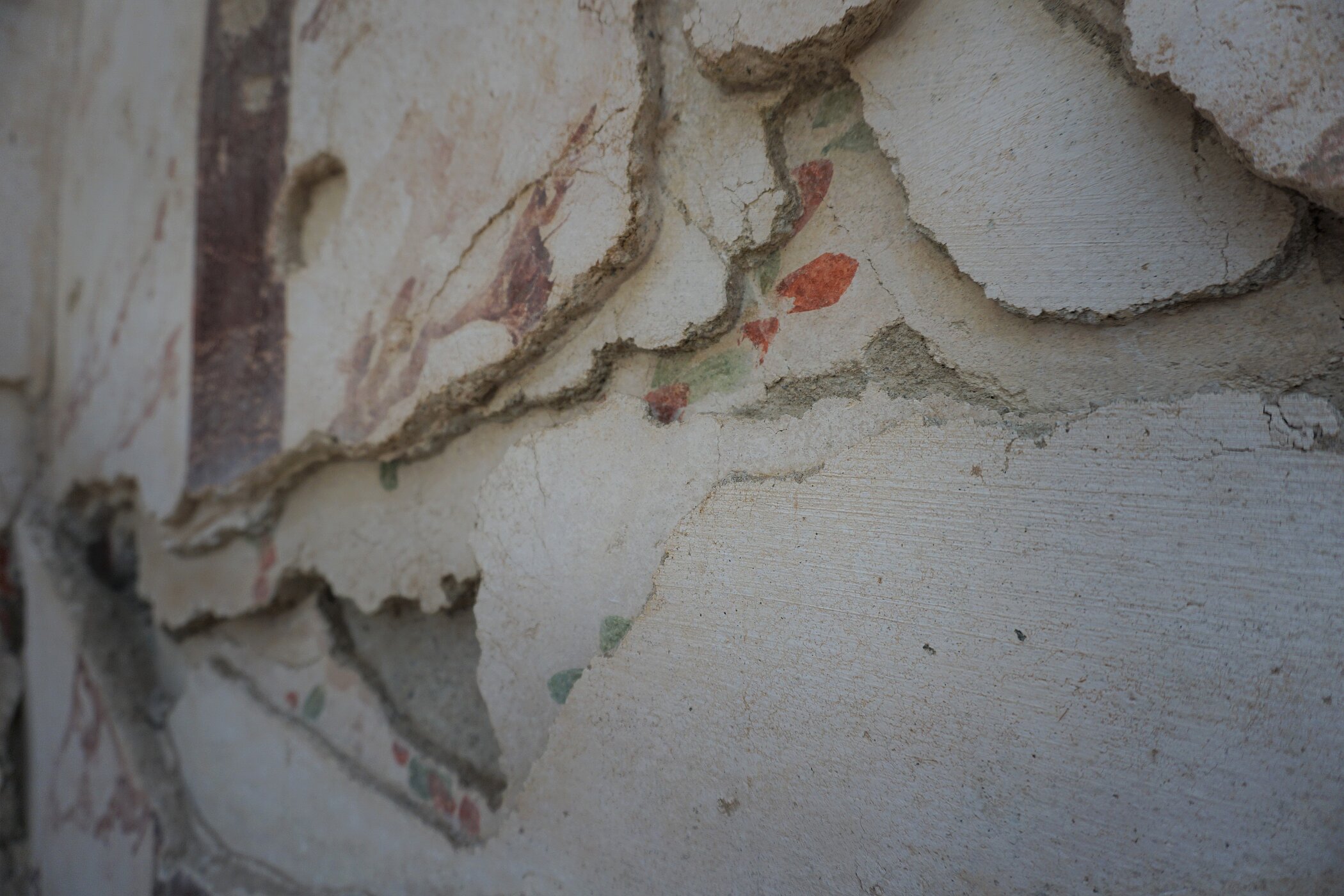Color in a New Light – Origins, Trade and Cultural Significance of Ancient Pigments
The ancient world was fascinated by color. People processed certain raw materials to use them as pigments. Their material qualities and provenance mattered. Yet little is known about where these materials came from: some might have been broadly available, others rare and traded far. Along the way from resource to artwork much is still unknown.
Provenance and Trade
A plethora of mineral pigments was used in the past; materials were processed ranging from powdered cinnabar or orpiment to artificially produced colors such as red lead, white lead and Egyptian blue. Written records indicate that (some?) colors were widely traded and that origin was important for the price and meaning of colors. They came together to color walls and sculpture alike and now enable the understanding of interaction across production technologies, trade networks and cultural relations in a new way.
Comparative possibilities
In contrast to metals, ceramics or glass, there are currently few comparative possibilities for pigments: similar raw materials have been used, but metals and pigments are not the same. Pigment provenance research is gaining momentum in the past years, but methodological groundwork is not keeping up: The ancient color palette remains largely unexplored; provenance tracers are not well constrained, which can be misleading and problematic for highly processed materials. And there is no pigment-specific reference database available for data interpretation. This project addresses these challenges through several connected objectives, creates a physical and digital reference database, and makes the results accessible with digital geographical maps.
Pigment networks: organization of production and trade
For the first time, key points of the pigment trade and production network are brought together to investigate pigment networks. The first steps follow Egyptian blue between important developments in production technology around 1300 BC and resource exploration between Egypt and the Aegean. While pigment production during the Iron Age was predominantly restricted to palaces, little is known about how far-reaching the trade routes were. Here, too, the focus is on the Aegean, where resources for pigment production are widespread and some excavations already provide evidence of pigment trade and possibly production. Written records then indicate that pigment networks underwent a major restructuring in the 1st century BC. According to ancient records, Egyptian blue production was moved from Egypt to Italy and centralized there. Recent publications show that copper from the Aegean was likely used for Egyptian blue production in Egypt. Later, Alpine copper sources played an important role for Italian Egyptian blue production in the 1st century BC. This project will use new analytical methods and complementary case studies to paint a clearer picture of pigment production and trade networks.
Projektleitung
Cooperations
- Hilary Becker, Binghamton University
- Clarissa Blume-Jung, Ruhr Universität Bochum
- Hericlia Bercoulaki, National Hellenic Research Foundation
- Ruth Siddall, University College London, Fitch Labor
- Thilo Rehren, Cyprus Institute
- Sabine Klein, Deutsches Bergbau-Museum Bochum, Leibniz-Forschungsmuseum für Georessourcen
- Pau de Soto, Universitat Autònoma de Barcelona
- Georg Plattner und Regina Hölzl, Kunsthistorisches Museum Wien
- Martin Auer, Universität Innsbruck
- Walter Gauß und Christoph Baier, ÖAI
- Christian Lengauer und Christian Koeberl, Universität Wien
- Ariadne Kostomitsopoulou Marketou, MF Norwegian School of Theology and Religion
- Gilberto Artioli, Universität Padova
- Francis Albarède, Ecole Normale Supérieure Lyon
Duration
04/2023–
Funding
ERC StG (PNr. 101078382)
Funded by the EU



